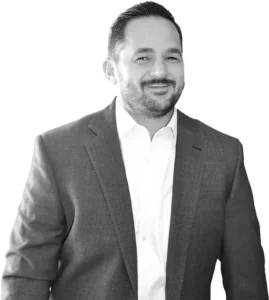One attribute of outstanding leadership is one’s ability to cast vision; to clearly articulate the organization’s objectives in a simple and inspiring manner. We call leaders that excel in this area visionaries.
I’m currently on a team at church to develop a vision statement for our congregation. I didn’t realize coming into this project just how difficult that task would be. To assist in the process, the group has been reading, listening to, and watching content on what it takes to develop a great vision statement. One video/speaker stood out to me. He posed this question, “What kind of qualities do you want to have as a leader?” He noted that the common answers are qualities like integrity, honesty, etc. He argued that the attribute we should all aspire to is clarity. The speaker went on to say, “Sure, we value integrity, but we follow clarity.” A great vision statement, like a great leader, provides clarity.
Here at The Bahnsen Group, we are amid our own project that intends to clarify how we design and manage client portfolios. Appropriately named, we are calling this project, Operation Magnify. Our Chief Investment Officer and Founder, David Bahnsen, has been referencing this project throughout some of the content we produce, and it’s begun to spark lots of interest and inquiries. I thought no better place than TOM to provide my perspective on Operation Magnify and what it means to The Bahnsen Group clients.
So off we go…
As investors, we will have a handful of memorable market experiences during our lifetime. These are abnormal events in which the markets will challenge our fortitude – think Black Monday 1987 or the Tech Bubble of the late ’90s or the Financial Crisis 2007/2008. Now, we have a new event to add to this list, COVID 2020. These events reveal to us our comfortability with volatility. We fill out a risk questionnaire during tranquil times isn’t always the best source for understanding our tolerance. For that reason, we must embrace this post-storm moment to study our behavior and reflect on whether our portfolio is fitting based on this recent experience. How did you react personally in March of 2020? Were you comfortable with the fluctuating value of your portfolio during this time? These are the types of postmortem questions that need to be asked.
We also know that these notable market events can leave a lasting impact on the investing environment itself – regulatory changes, policy adjustments, a shift in investor sentiment, etc. These changes also need to be accounted for in how we manage our investment portfolios as we advance.
The objective of Operation Magnify was to establish a sort of taxonomy of assets; a way of codifying the allocations within a client portfolio. By creating these distinct categories, we believe it will better help our clients understand each asset class’s distinct benefits – the expected risk/volatility of each and a better understanding of the potential reward (return expectations). This seemingly new approach is not about The Bahnsen Group establishing a wholly different philosophy, as that has not changed, but more about bringing clarity to clients around how a portfolio is constructed and customized towards their particular needs. Remember, a portfolio’s objective is to meet the needs of one’s financial plan and that plan is tailored based on your goals, tax situation, estate plan, risk tolerance, etc. Operation Magnify will help bring a clear understanding of how each part of a portfolio contributes to solving different financial planning objectives and how your customized allocations are harmonized with your financial plan.
Here’s how Operation Magnify spells out those seven distinct asset categories:
- Core Dividend Equity – As the building block of EVERY portfolio
- Income Enhancements – For select clients who want a yield boost
- Growth Enhancements – For select clients who want a growth boost
- Boring Bonds – Up to the capital preservation comfort need of a client
- Credit – As a distinct asset class from bonds, offering high yield, but more equity-like volatility in distress events
- Alternatives (traditional) – To diversify sources of risk and reward
- Illiquids and Directs – For ultra-high net worth clients of a certain return appetite without liquidity constraints
Over the coming months, we will discuss each of these categories in more depth both in our content and our one on one conversations with clients.
For today’s discussion, I’d like to zoom in a bit on categories 4 and 5 and discuss why that distinction is so important based on the environment we find ourselves in today.
Traditionally, what we are calling “boring bonds” and “credit” were always classified in finance under one category known as “fixed income” or broadly categorized as “bonds.” The problem is that each – boring bonds and credit – are distinctly different. Just as sweet peppers and ghost pepper fall under the same pepper family, they are very distinct from one another. Funny enough, when you google ghost pepper, one of the first questions that pop up on the search is, “can the ghost pepper kill you?”
Boring Bonds refer to high credit quality debt instruments like government bonds or investment-grade corporate bonds. On the other hand, credit captures the more volatile aspects of the bond market – emerging market debt, high yield bonds, securitized credit, etc. A client needs to know how much of which they own because each combination results in different outcomes they need to assess.
I remember reviewing a friend’s mom’s portfolio, a self-described, risk-averse investor who needed income from her portfolio. Upon review, I saw that her advisor had her portfolio 100% invested in what we call credit. While this approach may have solved for her income need, the added risk he piled on by this high percentage of credit in her portfolio, did not align with her overall goals and risk tolerance for more safety. She ordered a sweet pepper, and her advisor served her a ghost pepper.
My friend’s mom had two objectives she was trying to solve: she wanted a low volatility portfolio and high income. Based on her definition of “low” volatility and “high” income, this is probably not achievable in today’s environment. It is the advisor’s responsibility to have that tough conversation with the client and not mislead them into a portfolio that has more embedded risk than they can tolerate. Next, the advisor should discuss the importance of understanding trade-offs and the relationship between volatility and expected returns (risk/reward) to construct a fitting and agreed-upon portfolio.
I like how David Bahnsen explains the role of boring bonds in a portfolio in today’s environment. David describes that the traditional allocation of boring bonds was to achieve three objectives:
- Create some level of current income
- Provide upside potential (or a hedge) in times of equity market distress
- Act as a “parking lot” for preserving capital
David explains that the current (potentially generational) low-interest rates eliminate the traditional benefits of objectives one and two. You are then left with just a low volatility asset to park your money in. Operation Magnify helps clients understand how much they are allocated to boring bonds and spells out the return expectations – this clarity allows a discussion around if adjustments should be made.
There is a lot more to discuss on this topic, and we intend to keep providing more color on this project throughout the coming months, as we intend to educate our investors and help them refine their portfolios and plans. I would encourage you to listen to the Thoughts On Money podcast this week to hear more from myself, Trevor Cummings, and TBG Private Wealth Advisor, Sean Latimer, on Operation Magnify.
As always, any and all questions/comments are welcome. You can reach me at .
Until next week… this is TOM signing off…







